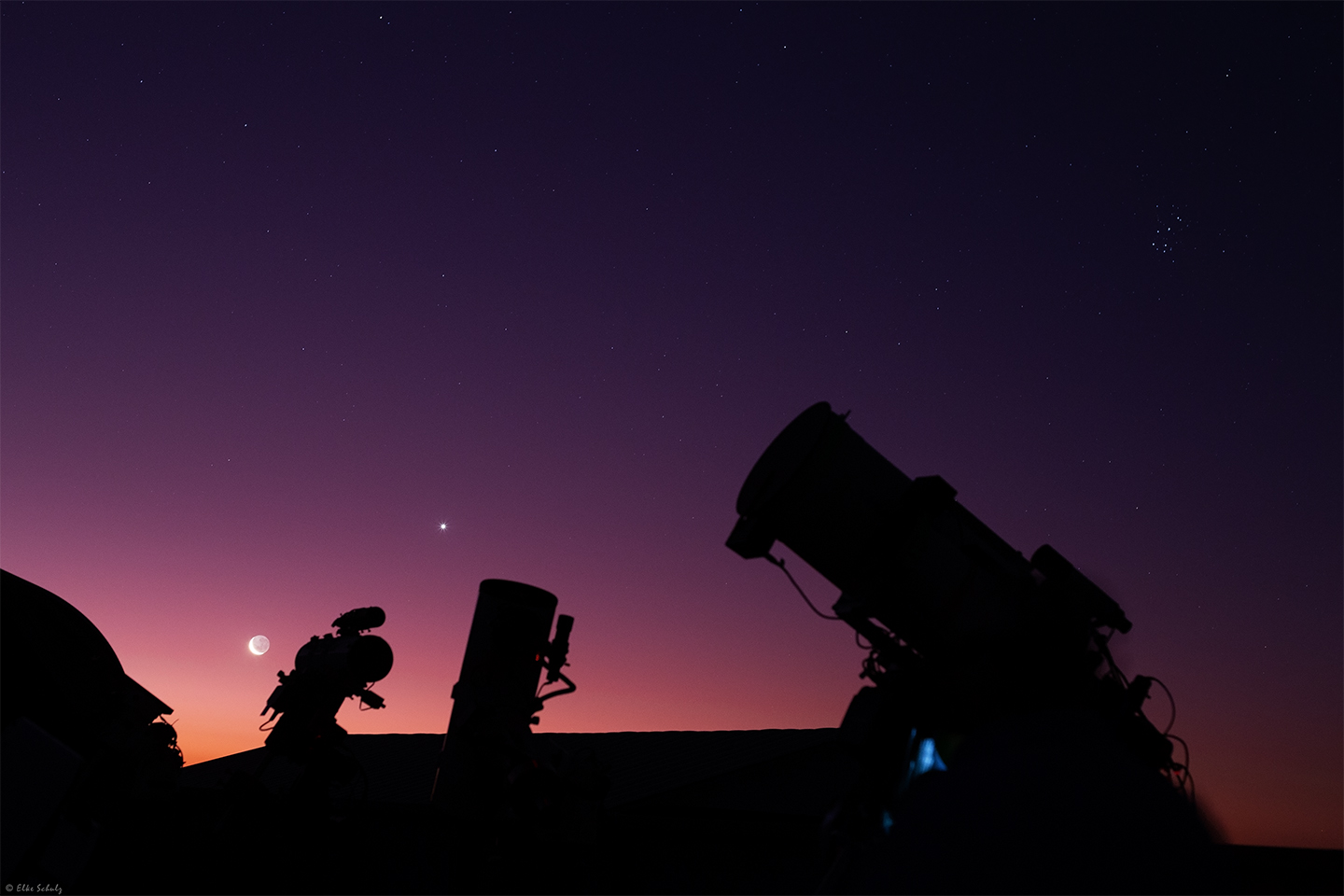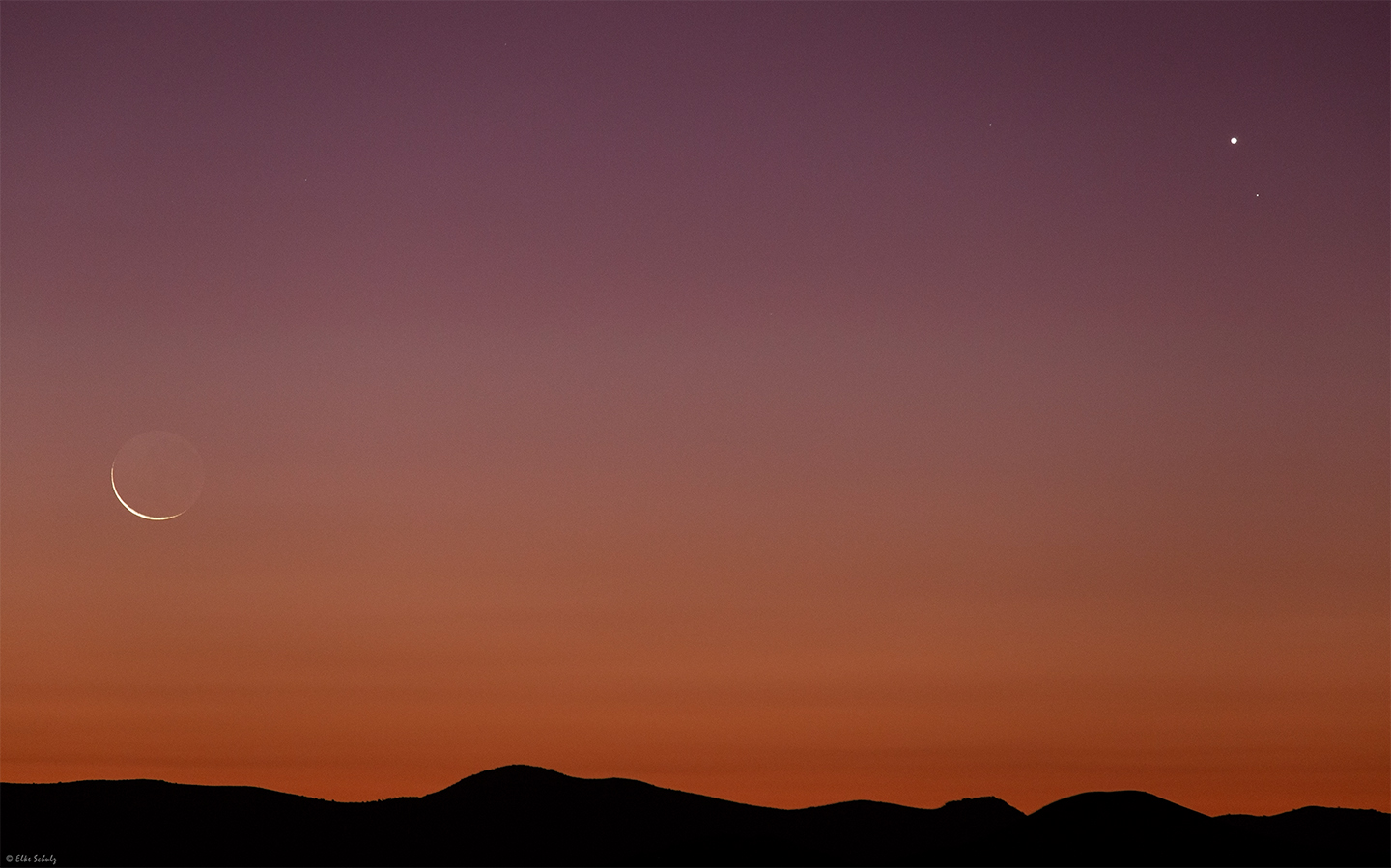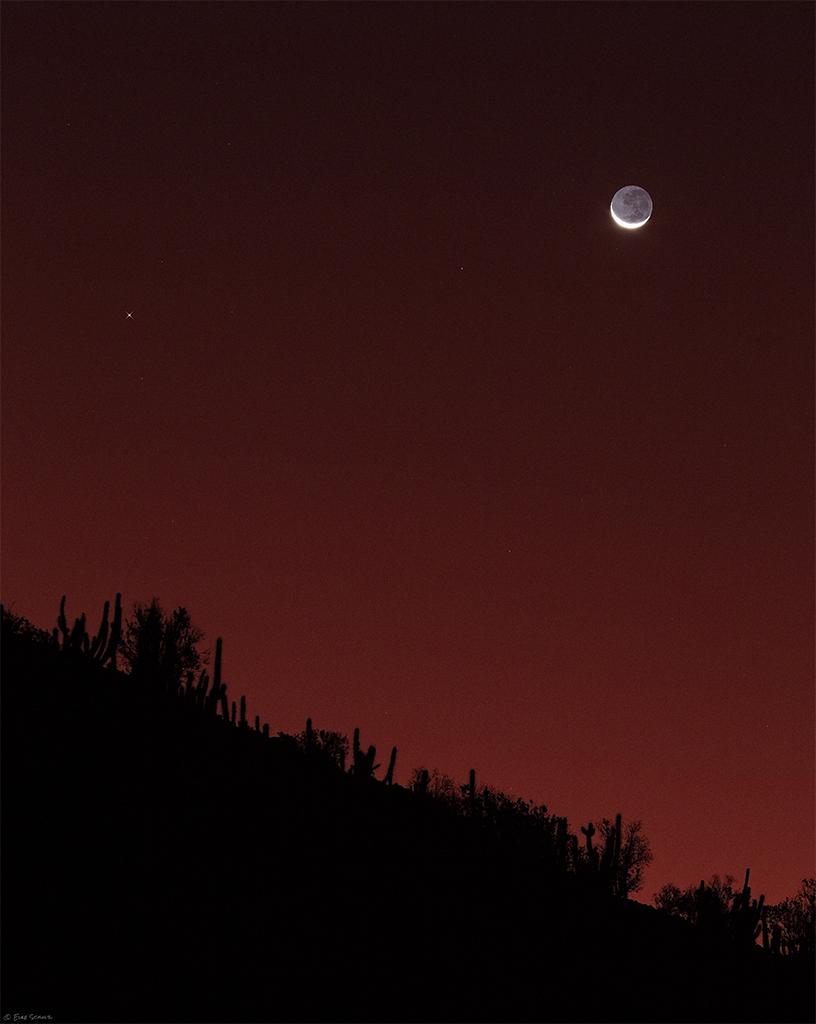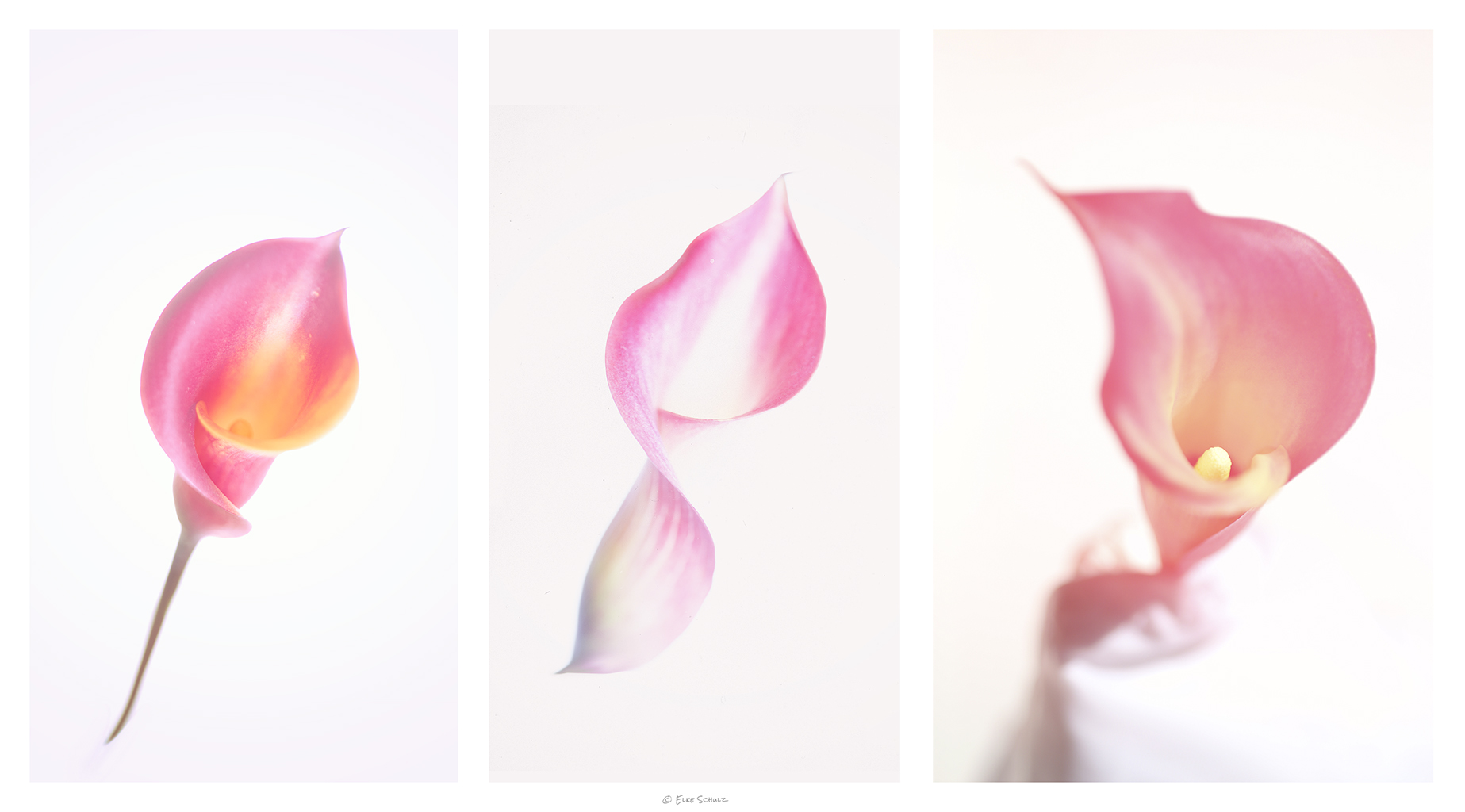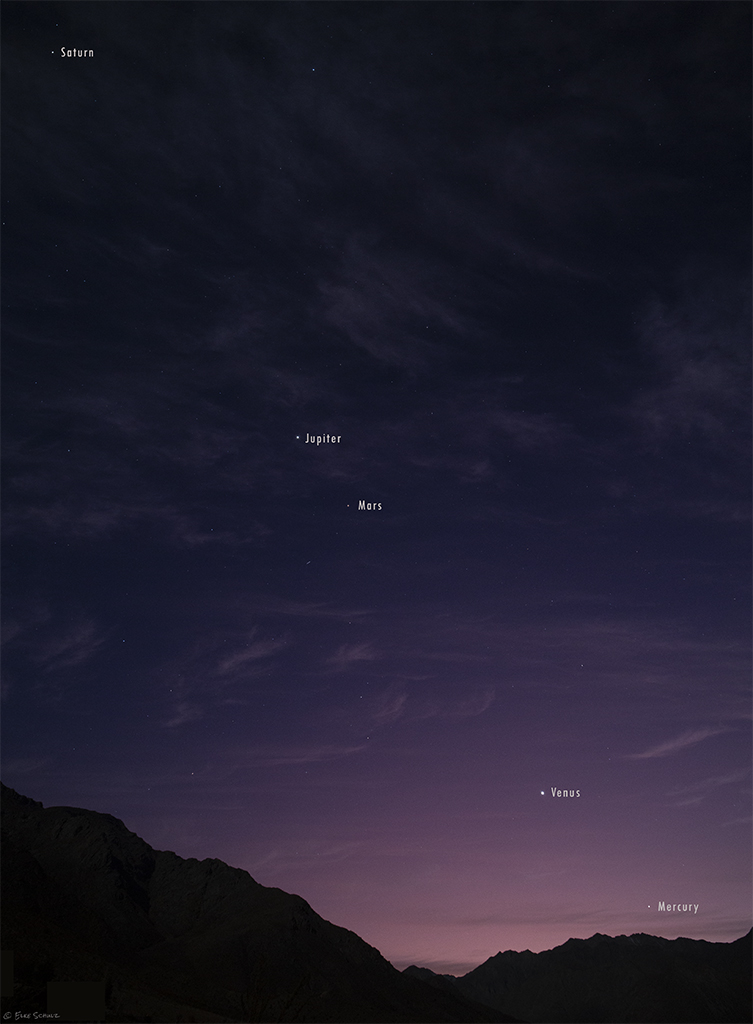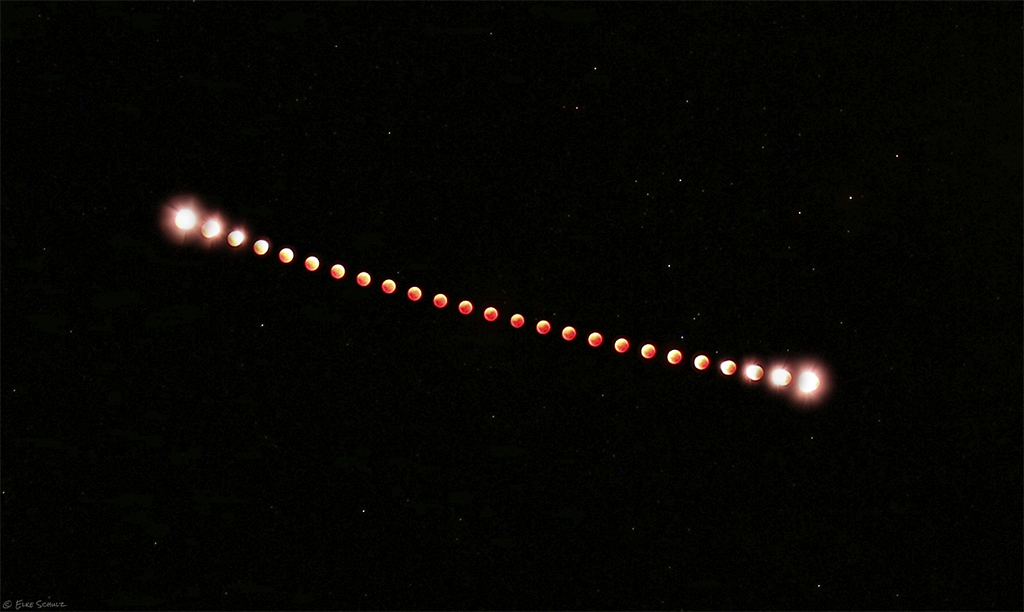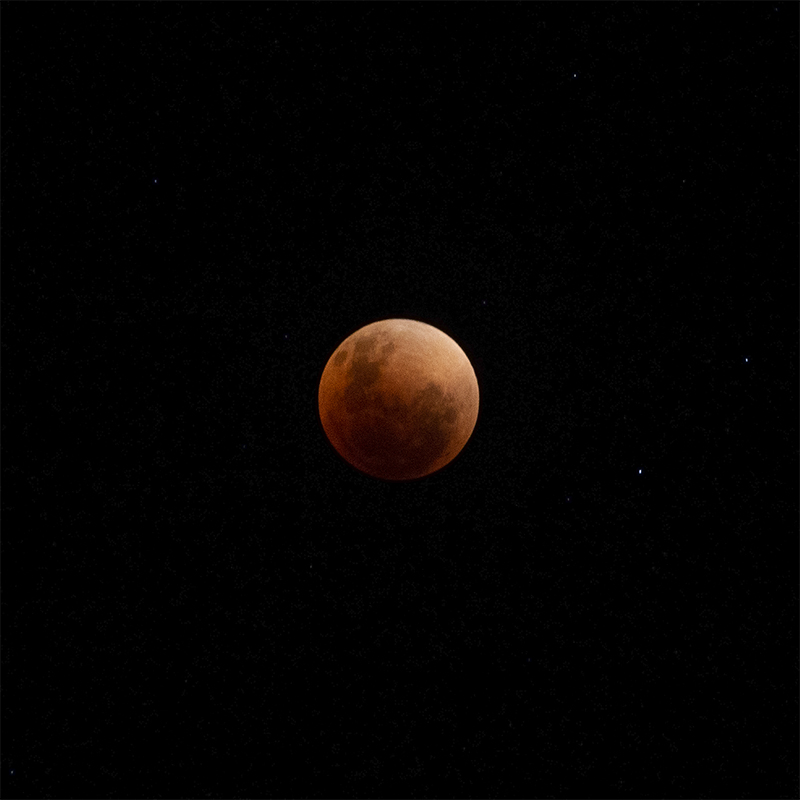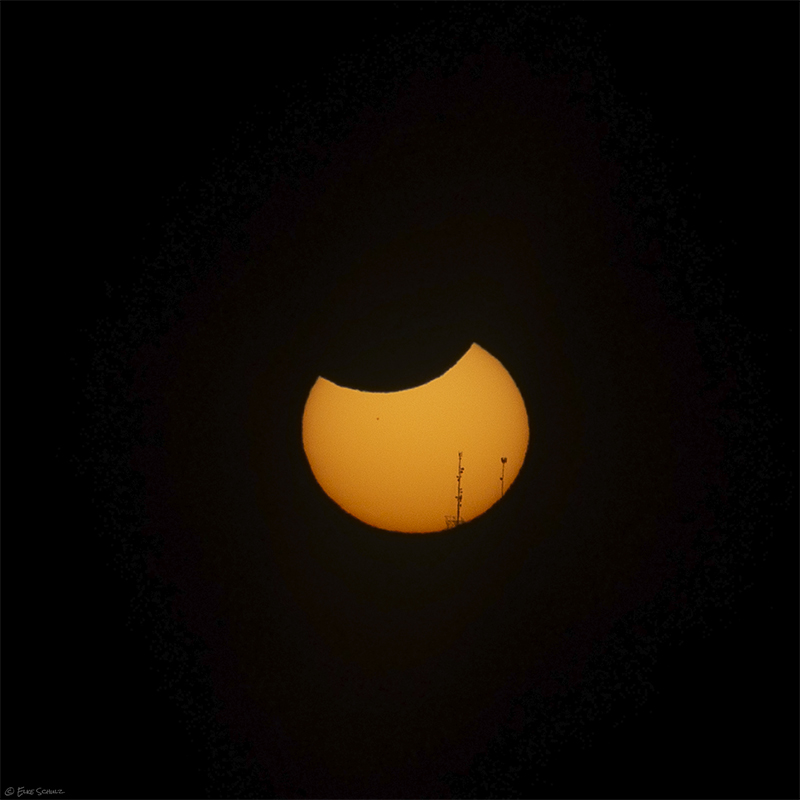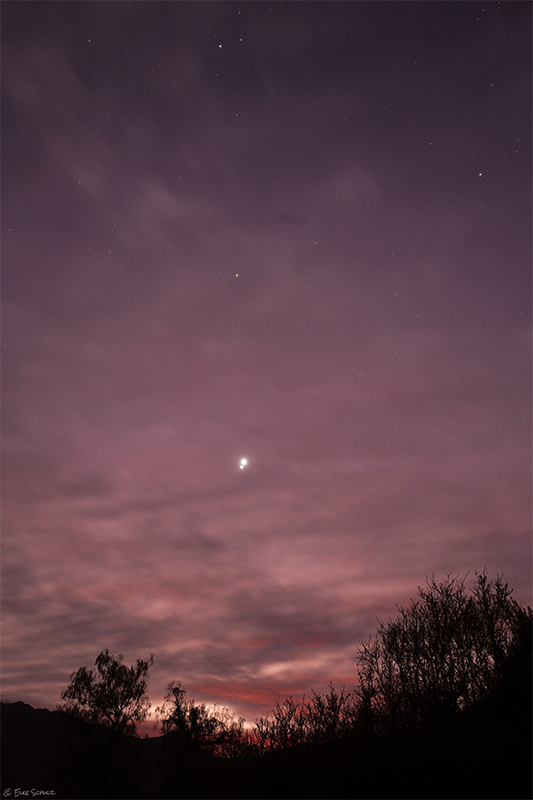Ready for the Night
Tonight I had the distinct pleasure of watching the sunset at the Obstech El Sauce Observatory. While the telescopes were
Lunar occultation of Jupiter
In the evening hours of February 22 we could observe a lunar occultation of the planet Jupiter. Shortly after sunset,
Heavenly Rendezvous
Tonight, I had the opportunity to catch the heavenly rendezvous of Venus and Saturn with the young waxing crescent moon.
Moon-Mercury Conjunction
On August 29th Mercury and the thin waxing crescent moon met up for a lovely celestial show. The view from
Creative Callas
A collage of macro shots of some picturesque purple callas.
Planetary party
*Update: My image of the planetary lineup was chosen by NASA as their astronomy picture of the day (APOD) for
Blood Moon Composite
A composite of the total lunar eclipse from May 15-16, 2022. Overall, I used 25 frames taken around totality. As
Super Flower Blood Moon
On Sunday night, we could watch how the full Flower Moon moved through Earth's shadow, resulting in a total lunar
Partial Solar Eclipse
We were treated to a partial solar eclipse on April 30, 2022. Partial solar eclipses happen when the Moon comes
Planets in the Morning
On April 30, 2022, we witnessed a magnificent conjunction of the two brightest planets, Jupiter and Venus, with Mars and




